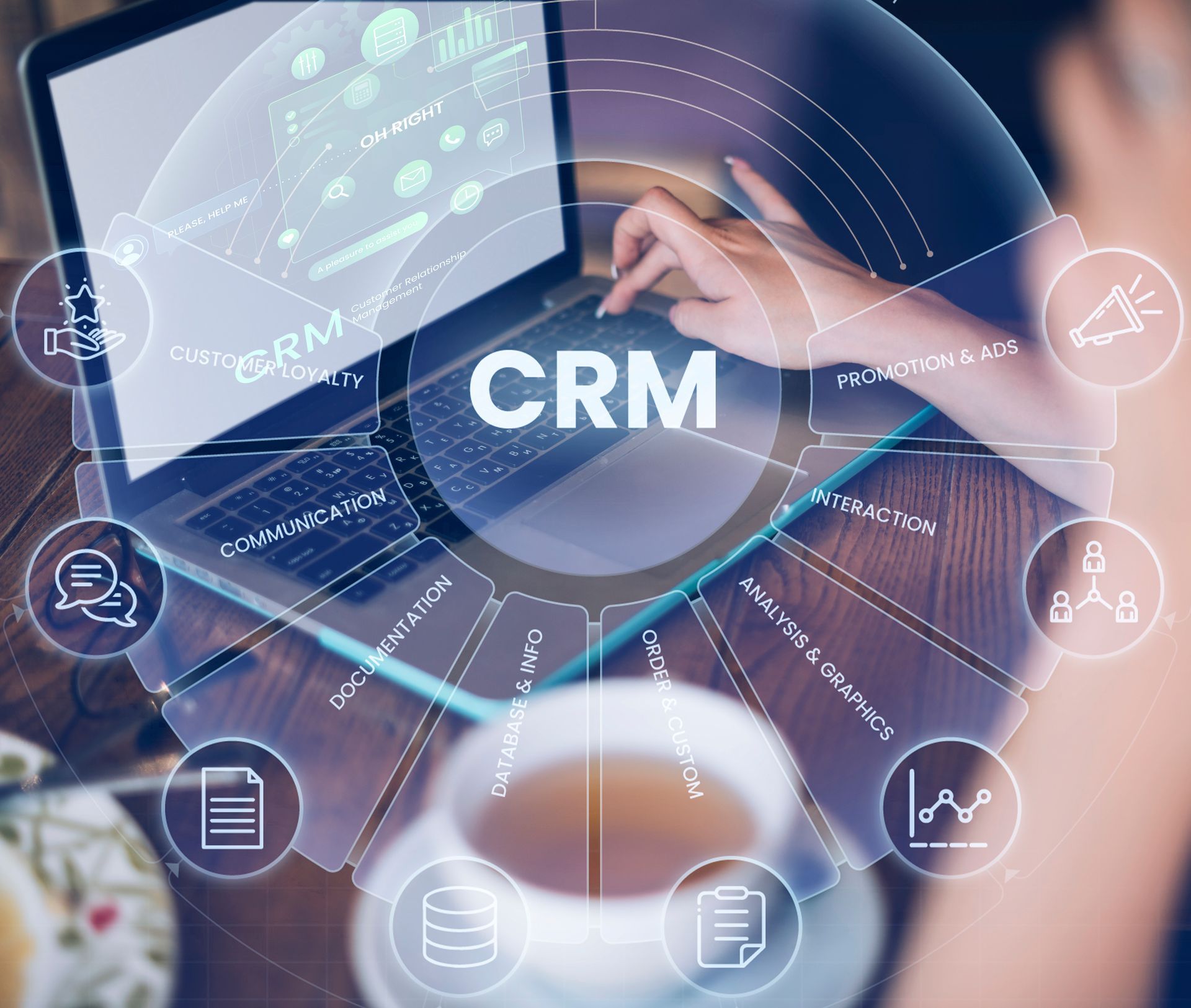Unleashing the Potential of CRM: Boosting Sales and Customer Satisfaction

In the blog post "Unleashing the Potential of CRM: Boosting Sales and Customer Satisfaction," we explore the transformative power of Customer Relationship Management (CRM) systems in driving sales growth and enhancing customer satisfaction. We discuss the key benefits of CRM, such as streamlining sales processes, improving data organization, and facilitating effective communication with customers. Additionally, we delve into strategies for harnessing the full potential of CRM, including leveraging data analytics to gain valuable insights into customer behavior and preferences, integrating CRM with other business systems for seamless operations, and adopting a customer-centric approach to cultivate solid and long-lasting relationships. This post will give readers a deeper understanding of how CRM can be a game-changer for businesses, enabling them to optimize sales efforts and deliver exceptional customer experiences.
Customer Relationship Management (CRM) has emerged as a critical tool for businesses looking to boost sales and enhance customer satisfaction. With its ability to streamline sales processes, organize data effectively, and facilitate customer communication, CRM has become a game-changer in today's competitive business landscape. By adopting CRM systems, businesses can gain valuable insights into customer behavior and preferences, integrate CRM with other business systems, and adopt a customer-centric approach to cultivate solid, long-lasting relationships. In this blog post, we will explore the power of CRM and discuss strategies for effectively implementing and utilizing it to unleash its full potential.
Understanding CRM
- Definition of CRM: CRM, or Customer Relationship Management, refers to a set of technologies, strategies, and practices businesses use to manage and analyze customer interactions and data throughout the customer lifecycle. It aims to improve business relationships with customers, ultimately driving sales growth and enhancing customer satisfaction.
- Benefits of CRM: CRM offers numerous benefits to businesses. Firstly, it streamlines sales processes by automating tasks, ensuring efficient customer management, and tracking sales opportunities. Secondly, CRM improves data organization by centralizing customer information, making it easily accessible, and enabling personalized interactions. Lastly, CRM facilitates effective communication with customers through features like email marketing and customer support ticketing systems.
- Types of CRM: There are various types of CRM systems available, including operational CRM, analytical CRM, and collaborative CRM. Operational CRM focuses on automating and improving customer-facing processes like sales, marketing, and customer service. Analytical CRM, on the other hand, focuses on analyzing customer data to gain insights and make informed business decisions. Collaborative CRM emphasizes collaboration between various departments to ensure seamless customer interactions.
Implementing CRM
- Setting CRM goals: Before implementing CRM, it is crucial to define clear and measurable goals. These goals can vary from increasing sales revenue to improving customer retention rates. By setting specific goals, businesses can align their CRM implementation strategy accordingly, ensuring optimal results.
- Choosing the right CRM software: With a wide range of CRM software available, choosing a solution that aligns with the business's goals and requirements is essential. Factors to consider include ease of use, scalability, integration capabilities, and pricing. Conducting thorough research and seeking recommendations from industry experts can help you select the most suitable CRM software.
- Integrating CRM with existing systems: To maximize the benefits of CRM, it is important to integrate it with other business systems, such as ERP (Enterprise Resource Planning) or marketing automation tools. This enables seamless data flow across different departments, ensuring efficient operations and a unified view of customer interactions.
Using CRM to Boost Sales
- Managing customer data effectively: CRM allows businesses to centralize customer data, making it easily accessible and enabling personalized interactions. By utilizing CRM's robust data management capabilities, businesses can gain insights into customer preferences, purchase history, and behavior patterns, enabling effective sales strategies.
- Streamlining sales processes: CRM automates various sales processes, such as lead management, opportunity tracking, and forecasting. By streamlining these processes, sales teams can focus on high-value activities, such as building customer relationships and closing deals, leading to increased productivity and higher sales conversion rates.
- Improving lead generation and conversion: CRM helps businesses effectively capture, track, and nurture leads. Through CRM's lead scoring and lead nurturing capabilities, businesses can prioritize leads, focus on the most promising opportunities, and deliver personalized content and offers to increase conversion rates
- Enhancing customer segmentation and targeting: CRM enables businesses to segment their customer base based on various criteria, such as demographics, purchase history, and preferences. This allows for targeted marketing campaigns and personalized experiences, increasing the chances of customer engagement and sales success.
Enhancing Customer Satisfaction with CRM
- Providing personalized customer experiences: With CRM systems, businesses can tailor their customer interactions based on their preferences, purchase history, and other relevant data. By delivering customized experiences, businesses can foster stronger customer relationships and enhance overall satisfaction.
- Improving customer support and service: CRM offers features like ticketing systems and knowledge bases that help businesses deliver efficient customer support. Businesses can improve customer satisfaction and loyalty by centralizing customer inquiries and providing timely and accurate responses.
- Utilizing customer feedback for improvements: CRM systems enable businesses to gather and analyze customer feedback through surveys, reviews, and social media interactions. By leveraging this feedback, businesses can identify areas for improvement, address customer pain points, and enhance their products or services accordingly.
- Building long-term customer relationships: By adopting a customer-centric approach, businesses can use CRM to nurture long-term relationships with customers. CRM allows for proactive communication, personalized offers, and targeted marketing campaigns, all of which contribute to customer loyalty and repeat business.
Measuring CRM Success
- Key performance indicators (KPIs): Businesses should establish relevant KPIs to measure the success of their CRM implementation. These can include customer satisfaction scores, customer retention rates, sales revenue growth, and lead conversion rates. Regularly monitoring these KPIs helps businesses assess the effectiveness of their CRM strategies and make necessary adjustments.
- Evaluating customer satisfaction and loyalty: CRM systems provide valuable insights into customer satisfaction and loyalty through feedback, surveys, and customer interactions. By analyzing this data, businesses can identify areas where customer satisfaction can be improved and take proactive measures to enhance loyalty.
- Assessing sales growth and revenue: CRM enables businesses to track sales growth, revenue, and pipeline performance. Businesses can identify trends, optimize sales strategies, and make data-driven decisions to drive further growth by analyzing this data.
- Analyzing customer retention and churn: CRM systems help businesses monitor customer retention rates and identify potential risks. By understanding the factors contributing to customer churn, businesses can take proactive measures to retain valuable customers and minimize revenue loss.
In conclusion, CRM systems offer immense potential in boosting sales and enhancing customer satisfaction. By streamlining sales processes, improving data organization, and facilitating effective communication, CRM empowers businesses to optimize their sales efforts and deliver exceptional customer experiences. By harnessing the power of CRM, businesses can gain valuable insights into customer behavior, improve customer support and service, and cultivate strong, long-lasting customer relationships. Ultimately, investing in a robust CRM system and implementing effective strategies can be a game-changer for businesses, enabling them to thrive in today's competitive market and achieve sustainable growth.





